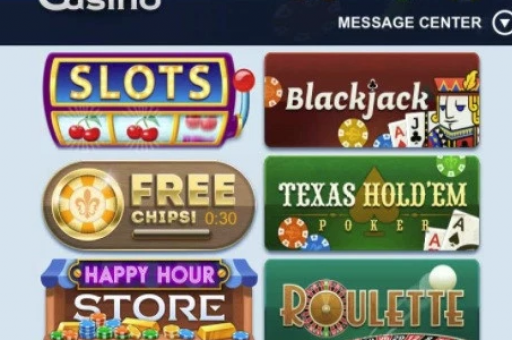21+3 blackjack
Introduction: 21+3 Blackjack is an exciting variation of the classic casino game that combines the thrill of blackjack with the anticipation of poker-style side bets. In this article, we'll delve into the intricacies of 21+3 blackjack, exploring its rules, strategies, and how to maximize your chances of winning. Whether you're a seasoned blackjack player looking for a new challenge or a beginner eager to learn, this comprehensive guide will equip you with everything you need to know about 21+3 blackjack.
1. What is 21+3 Blackjack?
21+3 Blackjack, also known as 21 Plus 3, is a popular blackjack variant that incorporates a side bet based on the player's initial two cards and the dealer's up card. This side bet offers the opportunity to win additional payouts by forming certain poker hands with the three cards.
The Basics of 21+3 Blackjack

In a standard game of 21+3 Blackjack, the primary objective remains the same as traditional blackjack: to beat the dealer by either achieving a higher total hand value without exceeding 21 or by the dealer busting. However, the inclusion of the 21+3 side bet adds an extra layer of excitement and strategy to the game.
The side bet in 21+3 Blackjack involves predicting whether the player's initial two cards and the dealer's up card will form a poker hand, such as a flush, straight, three of a kind, or a straight flush. If the combination matches one of the predefined poker hands, the player wins the corresponding payout.
It's important to note that the side bet is independent of the main blackjack game, meaning players can win the side bet even if they lose the main hand.
2. How to Play 21+3 Blackjack
Learning how to play 21+3 Blackjack is relatively straightforward, especially if you're already familiar with traditional blackjack rules. Here's a step-by-step guide to get you started:
Step 1: Place Your Bets
Like in standard blackjack, the game begins with players placing their bets. In 21+3 Blackjack, you have the option to place a wager on the main game and/or the side bet. It's important to understand the minimum and maximum bets for both the main game and the side bet before placing your chips.
For the main game, players aim to beat the dealer's hand by achieving a total hand value closer to 21 without going over. Cards are valued as follows:
Number cards (2-10): Face value
Face cards (Jack, Queen, King): 10 points each
Ace: 1 or 11 points, depending on which value benefits the hand
Once all players have placed their bets, the dealer deals two cards face-up to each player, including themselves. The dealer's first card is dealt face-up, while the second card (the hole card) remains face-down until all players have completed their actions.
Step 2: Make Your Decisions
After receiving your initial two cards, you have several options to consider:
Hit: Request an additional card to increase your hand total.
Stand: Decline any further cards and keep your current hand.
Double Down: Double your initial bet and receive one more card, after which you must stand.
Split: If your initial two cards are a pair, you can split them into two separate hands, each with its own additional bet.
Insurance: If the dealer's up card is an Ace, you have the option to take insurance against the dealer having a natural blackjack.
Once all players have completed their actions, the dealer reveals their hole card and must hit or stand according to predetermined rules. Typically, the dealer must hit on a hand value of 16 or less and stand on a value of 17 or more.
Step 3: Resolve the Main Game and Side Bet
After all players and the dealer have completed their actions, the main game and side bet are resolved:
Main Game: If your hand total is closer to 21 than the dealer's hand without exceeding 21, you win. If the dealer busts (exceeds 21), all remaining players with live hands win.
Side Bet: The outcome of the side bet is determined by the poker hand formed by the player's initial two cards and the dealer's up card. Payouts vary depending on the strength of the poker hand, as outlined in the game's rules.
3. Strategies for Winning at 21+3 Blackjack
While 21+3 Blackjack shares many similarities with traditional blackjack, the inclusion of the side bet introduces additional strategic considerations. Here are some tips and strategies to help you maximize your chances of winning:
Understand the Side Bet Payouts
Before placing a side bet in 21+3 Blackjack, it's crucial to familiarize yourself with the payout structure for each poker hand. Some hands, such as a straight flush or three of a kind, offer higher payouts than others, so consider the risk-reward ratio before committing to the side bet.
Stick to Basic Blackjack Strategy
While the side bet adds an extra element of excitement, it's essential to prioritize the main blackjack game and adhere to basic blackjack strategy. This includes knowing when to hit, stand, double down, or split based on your hand total and the dealer's up card.
Manage Your Bankroll Wisely
As with any casino game, bankroll management is key to long-term success in 21+3 Blackjack. Set limits on how much you're willing to wager on both the main game and the side bet, and avoid chasing losses by betting more than you can afford.
Practice with Free Games
Before diving into real-money 21+3 Blackjack games, take advantage of free online simulators or demo versions to familiarize yourself with the rules and test different strategies without risking your own funds.
The editor says: Incorporating a side bet into the classic game of blackjack, 21+3 Blackjack offers players the chance to win additional payouts by forming poker hands with their initial cards and the dealer's up card. While the main objective remains beating the
- Previous articlelive betting blackjack
- Next articleonline uk betting sites(Top UK Betting Platforms Your Ultimate Guide to Online Wagering)
